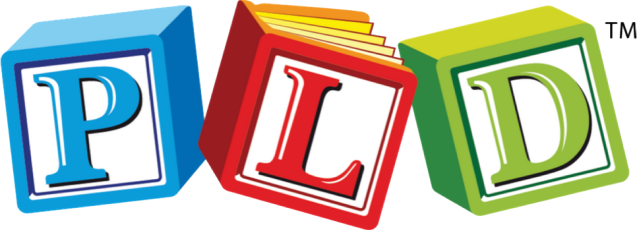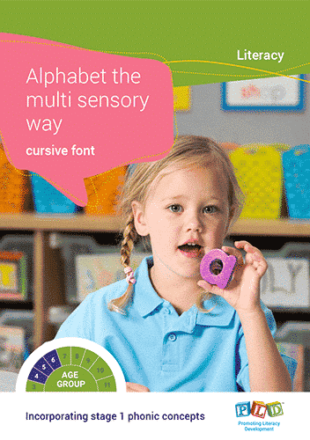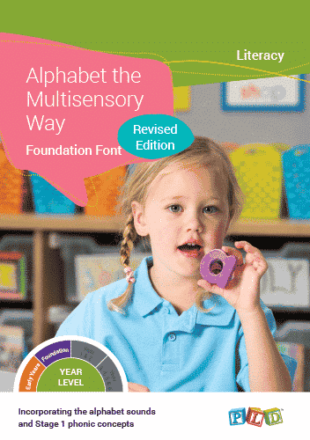Synthetic Phonics is the gold standard, evidence-based approach to teaching literacy, which suggests the fastest pathway into literacy is knowledge of alphabet sounds and phonic sounds. Students require alphabet knowledge in order to embark on the process of learning to read and spell. However, rather than letter naming ability, letter sound knowledge is the more important skill for entry into formalized literacy learning.
Alphabet Sounds and Spelling
- In order to spell the basic word ‘dog’ a child must first “sound-out” (or phonemically segment) “d”, “oh”, “g” and then the child must recall and apply in correct order the alphabet letter sounds.
- In order to read the word ‘dog’ a child must recognize each letter symbol and convert each symbol into the correct sound “d”, “oh”, “g” and then the child must blend the sounds together (phonemic blending ability).
In neither of the above early spelling and reading processes did alphabet letter naming come into the equation. Although knowing the visual alphabet is important to ‘name the letters’ when spelling, it doesn’t allow students to better learn to read and write. Instead knowing the sounds of the alphabet is the more important skill.
However, many years of experience working with students has revealed a pattern. It is alphabet letter sound ability that is the more difficult of the two areas for students to acquire and it is alphabet letter sounds that parents often have difficulty pronouncing.
How to Teach Alphabet Sounds
At PLD Literacy, we focus on a multi sensory approach. Within this program, a multi-sensory approach to teaching the alphabetic letter sounds has been adopted:
- Students feel what their mouth is doing when they produce the letter sounds.
- Students see what their mouths look like when their mouths produce the letter sound (through an image of the mouth on each page).
- Students also visually connect a core picture/word with the letter sound (e.g. ‘mix’, ‘teeth’ and ‘snake’).
- From an auditory perspective students identify the initial sound in simple target words (e.g. teeth starts with a “t”).
- Students move and rehearse a basic action associated with each target picture (which also engages a kinaesthetic dimension).
This multi-sensory focus will ensure children transfer their understanding of the alphabet sounds to their learning. Attention to the mouth movements involved in producing the sounds of letters heightens children’s attention to the sound structure and supports the organization of the letter symbols in spelling and the decoding of the symbols in reading. The combination of the attention to the oral, auditory and visual aspects of the alphabetic letter symbols significantly accelerates the acquisition of the earliest reading and spelling steps.
Video Example of a Multi-Sensory Approach to Literacy
The following video clip provides a model of the pronunciation of each of the alphabet sounds with an Australian accent. The viewing of the clip aims to assist those working with children to articulate the best model of the common sound linked to each alphabetic symbol and thereby assist the transition to early reading, spelling and writing. Several demonstrations are included which illustrate:
- How to pronounce the sounds of the alphabet.
- How to articulate each sound with the associated letter action.
- Tips for building upon letter naming to the more useful alphabet sounds.
- Models of the mouth movements that accompany the alphabet sounds, and tips for how parents can model the sounds when English is not their first language.
So are alphabet sounds important to literacy?
The ultimate goal of literacy instruction is for a child to successfully learn to read, write and spell. Research and best practice identify the best approach to teaching literacy is a synthetic phonics approach, in which knowledge of alphabet sounds is key. Although understanding alphabet sounds may be more difficult than learning letter names, it is the knowledge of the sounds of the letters that will allow children to successfully transition through the process of learning to read, write and spell. Teaching children the alphabet sounds should, therefore, be the focus of literacy instruction.
This blog was first published on the 28th of August 2015.
About PLD Literacy
PLD provides an Australian, evidence-based approach to Structured Synthetic Phonics (SSP) for primary school educators. Aligned with the Science of Reading, PLD’s SSP approach extends from the Junior Primary years through to the Upper Primary years and thereby facilitating a whole school approach.
PLD’s method is derived from the disciplines of speech pathology, occupational therapy and education. As an Australian publisher and professional development provider, PLD advocates that literacy and learning outcomes are maximised for children when their Literacy, Oral Language and Movement & Motor skills are targeted.
PLD’s Structured Synthetic Phonics Teaching Overview
PLD’s Structured Synthetic Phonics (SSP) program is an Australian evidence-based whole-school offering that is aligned with the Science of Reading. The PLD teaching sequence commences with initial (simple) code and gradually introduces extended code. All of the PLD programs are supported by downloadable teaching sequences and companion screening and tracking manuals for each primary school year level; Early Years, Foundation, Year 1 & 2 and Year 3, 4, 5 & 6.
AUSPELD Recommends PLD Programs
PLD has a positive working relationship with SPELDs in various states. Many of the SPELDs have been supplied with a full collection of the PLD programs for their libraries and PLD also collaborates annually with workshop presentations throughout Australia.
AUSPELD provides recommendations on evidence-based programs that are backed by current research, linked to improved academic results and supported by independent reviews of the effectiveness of the program. This allows schools to make informed choices on the programs they implement and thereby preventing the number of students with a dyslexia diagnosis.
AUSPELD applies the three-tier approach to implementing Structured Synthetic Phonics (SSP) in schools. This is explained here.



 print
print
